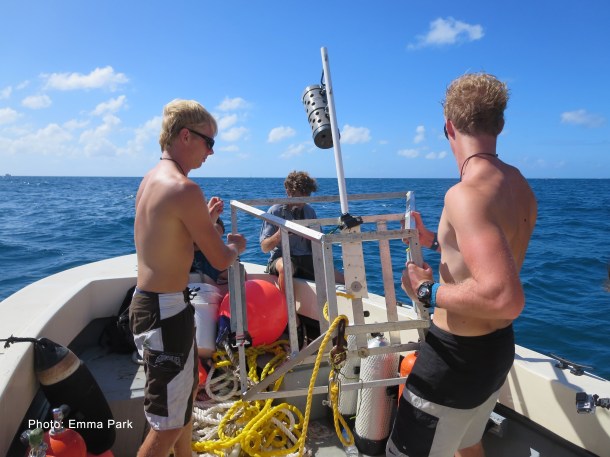Written by Emma Park. Emma is an undergraduate at UNC who spent her winter break working with The Ocean Foundation.
Over part of winter break, I traveled to the eastern Caribbean to work with Hello Ocean, a nonprofit that showcases ocean conservation work through a series of online videos. I helped with the production of one video about the shark conservation work of the St. Maarten Nature Foundation.
Why are sharks so important?
Sharks are vital for maintaining the balance of marine ecosystems. They are apex predators, which means they’re at the top of the ocean food chain. They regulate the populations below them, preventing overfeeding, resource depletion, and the collapse of entire food chains.
Unfortunately, around 2010 the Nature Foundation noticed a decline in the island’s shark population. Poaching sharks for their fins and teeth was becoming increasingly common, so the organization began lobbying for the protection of the species. In 2011, the government issued a decree protecting sharks in St. Maarten’s waters, but the Nature Foundation’s conservation efforts did not stop there.

The Baited Underwater Video System (BRUV)
Today, the organization is using Baited Remote Underwater Video (BRUV) systems to survey the sharks in the area, and while working with Hello Ocean, I got to see their research efforts first-hand!

Anchovies attract sharks to the BRUV
The BRUV systems are simple steel frames that contain housings with video cameras and a canister filled with bait. Multiple BRUVs are dropped into the water at a specific location, and the bait attracts sharks. The stereo imagery from the cameras allows the Nature Foundation not only to see the types and numbers of sharks that come into view but also to measure them. Their team has seen sharks ranging from 40-centimeter juveniles to nurse sharks over 2 meters long.
The Nature Foundation uses the information from these BRUV systems to learn about the species’ composition, distribution, and density of the local shark population. The surveys provide a baseline about the types, life stages, population size, and geographic locations of sharks in St. Maarten’s waters. This valuable data will help determine future conservation measures, such as where to expand the boundaries of the marine park.

The Nature Foundation team dropping the BRUV
This research is an important initial step in protecting these incredibly important creatures. It was awesome to get a closer look at the Nature Foundation’s work! You can see some of the shark footage that they’ve collected below (or here—this video is of a tiger shark that approached one BRUV system)!
While I was working with Hello Ocean, I got to play a role in every part of the video production process, from planning the ocean conservation videos to filming and editing footage. If you’re interested in volunteering, you can check out http://helloocean.org/volunteer/ to learn more about how to get involved!
Pingback: Warren County, NC: Birthplace of Environmental Justice | UNder the C